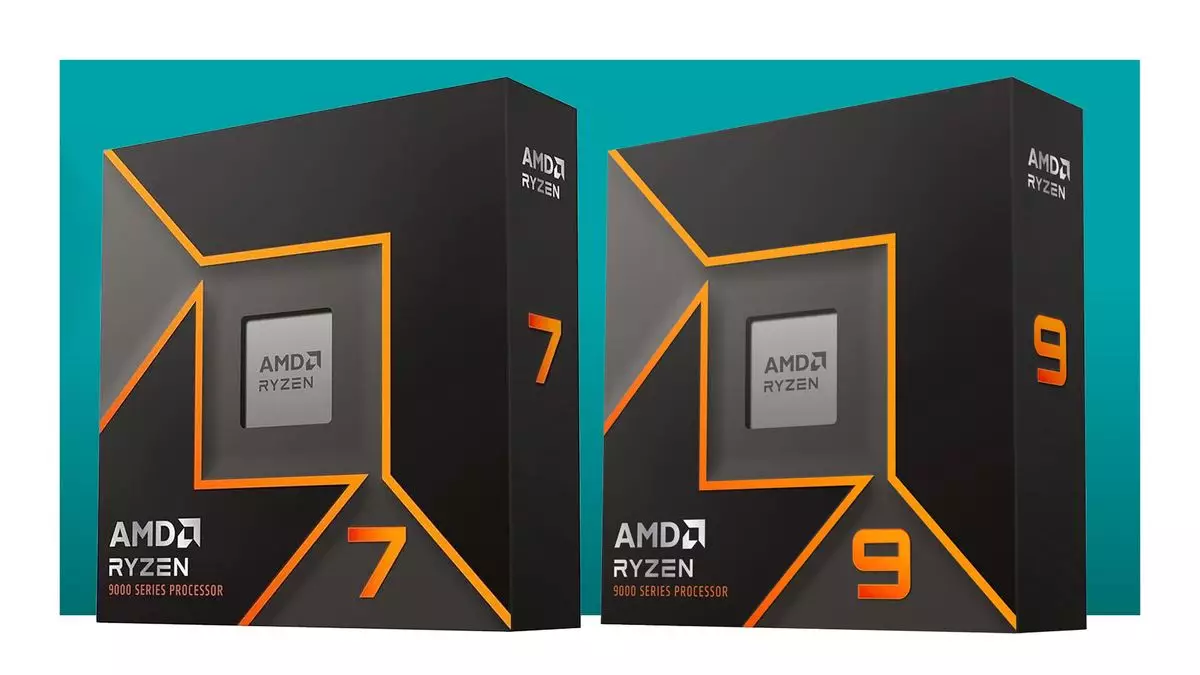Intel’s recent announcement of exceeding earnings expectations presents a glimmer of hope for a company that has faced substantial challenges this year. However, the enthusiasm is tempered by a landscape fraught with intensified competition, particularly from AMD, which has been strategically positioning its Ryzen 9000-series processors at competitive prices. This article delves into the factors contributing to Intel’s current predicament while examining the implications for consumers in the gaming community.
Intel’s notification that it surpassed its earnings forecast might suggest a positive turn for the company, but it is essential to consider the broader context of a year marked by volatility and underperformance. The semiconductor giant has had to navigate a series of missteps and disappointments. While the Lunar Lake series may have been an unexpected triumph, the introduction of its desktop Arrow Lake processors has proven to be less than impressive. For Intel, surpassing earnings guidance feels like a faint echo of success rather than a resounding victory as it grapples with a decline in market share and innovation.
The increasing affordability of AMD’s Ryzen 9000-series processors is undoubtedly a double-edged sword for Intel. With competitive pricing, AMD is not only drawing consumers away from Intel but is also forcing the company to reevaluate its pricing strategy. On platforms such as Newegg, the pricing for AMD’s CPU lineup offers significant savings compared to equivalent Intel offerings. For instance, while Intel’s Core Ultra 9 285K retails at around $630, often out of stock, the Ryzen 9600X stands as a formidable alternative, priced 26% lower than its Intel counterpart.
Moreover, the disparity continues into the motherboard market, where the cheapest Z890 motherboard for Arrow Lake processes around $190, whereas an entry-level AM5 motherboard for the Ryzen series can be found for as low as $76. This price gap extends not only the immediate purchasing power of consumers but also influences their overall system upgrade costs, further skewing preference towards AMD as users seek to maximize value.
Given the current market dynamics, PC gamers contemplating an upgrade must perform due diligence to find the best value for their money. The optimal choice for gamers appears to be the Ryzen 9700X, which boasts a competitive $359 MSRP that has recently dropped to $312. Such pricing, coupled with solid performance metrics, presents a compelling offer for users looking to enhance their gaming experience without breaking the bank.
The upcoming Black Friday deals are expected to usher in even greater discounts, particularly for AMD processors, making it crucial for consumers to stay informed and act swiftly. As companies roll out their sales strategies, gamers should leverage these opportunities to not only secure high-performance CPUs but also to improve their overall gaming setups at a fraction of the price typically associated with top-tier components.
As Intel heads into a critical phase for its future, it must address the mounting challenges posed by its rival. The company’s pricing issues, combined with inventory constraints that have left consumers yearning for new products, necessitate a reimagining of its approach to market pressures. To compete effectively against AMD, Intel must innovate and deliver compelling products rather than merely relying on historical recognition to retain market share.
While Intel experienced a momentary boost in earnings, larger structural problems loom, exacerbated by AMD’s increasing prominence in the CPU market. As consumers navigate these turbulent waters, the choices before them offer ample opportunity to make informed, financially sound decisions that prioritize performance and cost efficiency. The gaming community stands at a crossroads, one that reflects the larger narrative of innovation, competition, and consumer empowerment amidst a rapidly evolving technological landscape.

